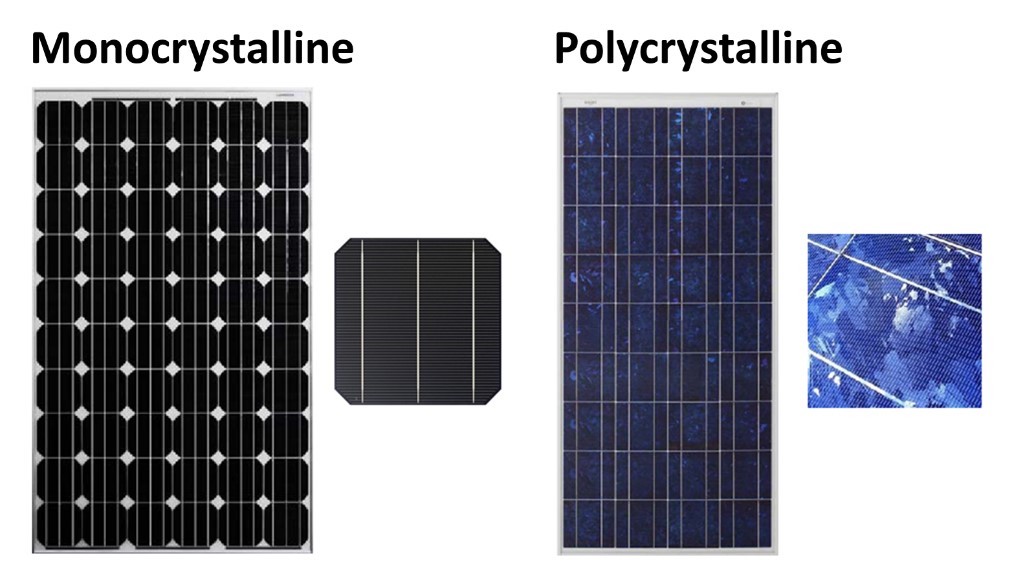 Monocrystalline vs Polycrystalline
Monocrystalline vs Polycrystalline
Mono crystalline solar panels are the most efficient solar panels you can buy. By definition it means that they transform the highest quantity of solar power directly into electrical power of any panel. Mono crystalline panels are made out of single pure pieces of silicon. They are created from quartz crystals which are melted down under intense temperature. The smelted silicon will then be filtered and put into round ingots of very 100 % pure silicon. These are then sliced into flat pieces, phosphorus is added and then they’re ready to go. Mono crystalline solar panels are still the very best solar power panels you may get.
Solar cells made of monocrystalline silicon (mono-Si), also called single-crystalline silicon (single-crystal-Si), and are quite easily recognizable by an external even coloring and uniform look, indicating high-purity silicon. Monocrystalline solar cells are made out of silicon ingots, which are cylindrical in shape. To optimize performance and lower costs of a single monocrystalline solar cell, four sides are cut out of the cylindrical ingots to make silicon wafers, which is what gives monocrystalline solar panels their characteristic look.
Polycrystalline silicon, which also is known as polysilicon (p-Si) and multi-crystalline silicon (mc-Si). Unlike monocrystalline-based solar panels, polycrystalline solar panels do not require the Czochralski process. Raw silicon is melted and poured into a square mold, which is cooled and cut into perfectly square wafers.
When choosing the most appropriate solar PV panel for your project, consumers are faced with many choices on the quality and cost spectrum. Consumers seek the best-possible combination of high-quality at a competitive price… but in doing so, they might overlook their technology options. It’s important to consider the performance advantages between monocrystalline and polycrystalline solar panels.
Simply defined, the material difference between polycrystalline and monocrystalline rests in the composition of the silicon substrate used to make solar cells, and in turn solar panels. As the name implies, monocrystalline means “a single crystal,” while polycrystalline means “many crystals.” Large crystal sizes lead to more efficient solar cells, which is why monocrystalline cells are typically more efficient than their polycrystalline counterparts, and because of the silicon casting and wafering process, it costs about more to create solar cells with monocrystalline structures.
Generally speaking, polycrystalline panels are ideal for installations with near-unlimited roof or ground space. They also make sense for owners looking to minimize the system cost. On the other hand, monocrystalline panels are ideal for smaller roof tops or space-constrained properties, as monocrystalline technology produces higher efficiency cells so you get more power onto the same surface area. Monocrystalline panels also feature a lower temperature coefficient, which means that as the panels get hotter they will typically outperform their polycrystalline counterparts.
Our Recommendation
American made high-performance and superior quality solar panels SolarWorld's Sunmodule® solar panels are designed and manufactured to the highest standards of quality, performance and durability. The grid-tied and off-grid products from SolarWorld come in a variety of sizes and power, making them suitable for all applications – from a remote power generator to a large-scale power plant.
SolarWorld is a solar pioneer, one of the world’s largest solar-technology producers and the largest U.S. solar panel manufacturer for over 40 years. In its technology, manufacturing, performance, service and environmental track record, the company is a solar industry leader.
